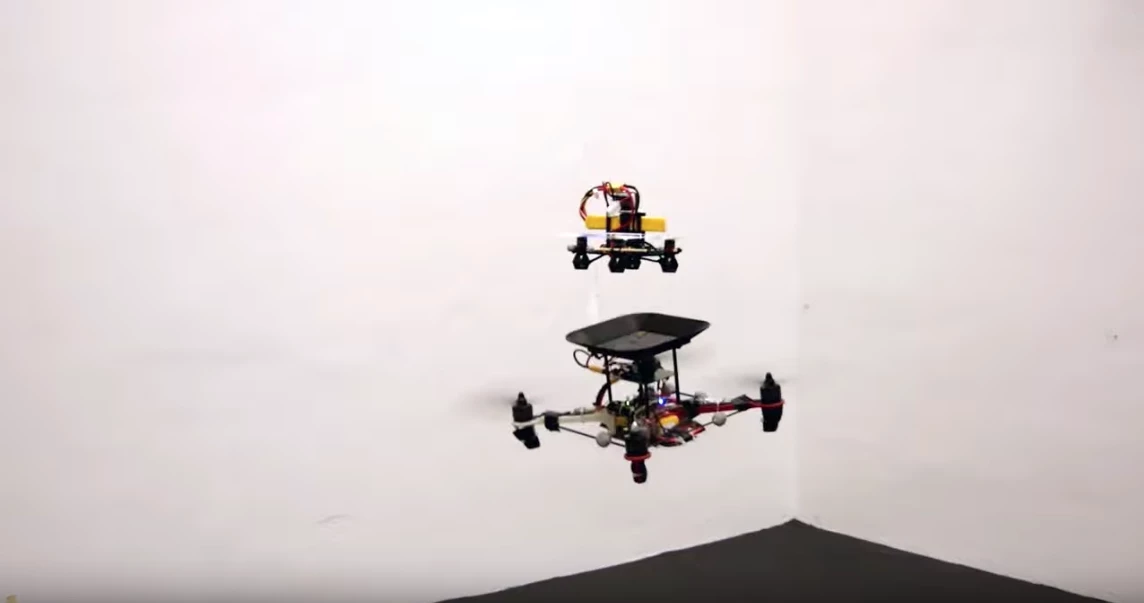Quadcopters have quite a few strengths as aircraft, but battery life is not one of them. The very best models can operate for around 30 minutes at a time, and in the past we’ve looked at technologies that could stretch these flight times by wirelessly powering them during flight or incorporating extra battery cells into the airframe. The latest interesting development comes from scientists at the University of California (UC) Berkeley, who have designed an inflight docking system that can keep quadcopters flying for far longer.
The new inflight charging system developed by a team at UC Berkeley’s High Performance Robotics Laboratory serves as a proof-of-concept technology that could greatly improve the flight times of small unmanned drones. It actually makes use of two drones, one larger main quadcopter and a smaller one that is essentially a flying battery. Mounted to the top of the main quadcopter is a docking platform, which allows it to mate with the special docking legs of the smaller drone. Spring-loaded contact points and copper plates then allow for electrical contact as the small drone nestles into the larger one.
From there, the smaller drone can add power from its onboard battery to the electrical circuits powering the main quadcopter until it is completely discharged. Once that happens, it flies off, and another, fully charged smaller quadcopter can fly in and take the reins. During these interchanges the main quadcopter relies on its own batteries, gradually depleting them, but the team repeated the process over and over and was able to extend its flight time from 12 to 57 minutes.
You could imagine this kind of technology proving particularly useful in drone applications such as surveying or monitoring, where quadcopters would ideally hover in the one position for extended periods of time.
The team has published a paper describing the research which can be accessed online here, while the video below shows the technology in action.




